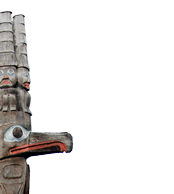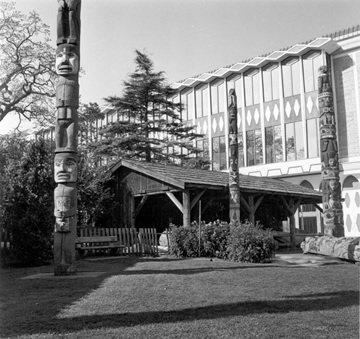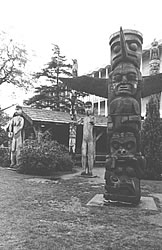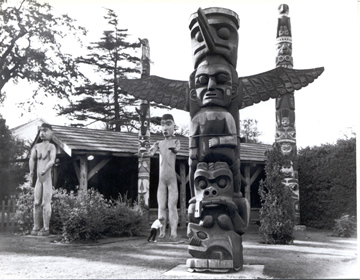 |
|||||||||
 |
|||||||||
 |
|||||||||

 Thunderbird
Park, 1969, showing the carving shed that was built in 1952.RBCM
PN12988-6, 7. Thunderbird
Park, 1969, showing the carving shed that was built in 1952.RBCM
PN12988-6, 7.
|
IntroductionCarvers’ Workshop, 1952In 1952, the provincial museum began a program of pole restoration. The purpose of the program was to replace the original carvings in Thunderbird Park that were deteriorating through exposure to the elements. These would be moved indoors and new poles created by First Nations carvers working in the park. The program was intended “to preserve the art of totem-carving and to serve as a unique tourist and educational attraction,” according to the annual report of the Provincial Museum of Natural History and Anthropology for that year. Mungo Martin, who was then 71 years old and recognized as “the finest totem-carver remaining” and “an outstanding authority on all aspects of native culture” of the Kwagu’ł, headed the program. |
|
 Carving
shed, ca 1967. Carving
shed, ca 1967. RBCM PN17217-1. |
This
building, large enough to accommodate work on monumental carvings,
was erected during the spring and summer of 1952. It provided a
covered studio for the carvers; one side was left open to allow
visitors to interact with the carvers and learn about First Nations
cultures from the artists themselves. The museum’s annual report
for 1952 stated that “as a
tourist and educational attraction,” the program was “an
outstanding success.” In two days during the tourist season, “2,375
people watched the carvers at work and 962 of them took pictures,
including 196 with movie cameras.” For many people, meeting
Mungo Martin and the carvers in Thunderbird Park led to a lifelong
appreciation of First Nations cultures. |
|
| Back to Carvers Workshop |

